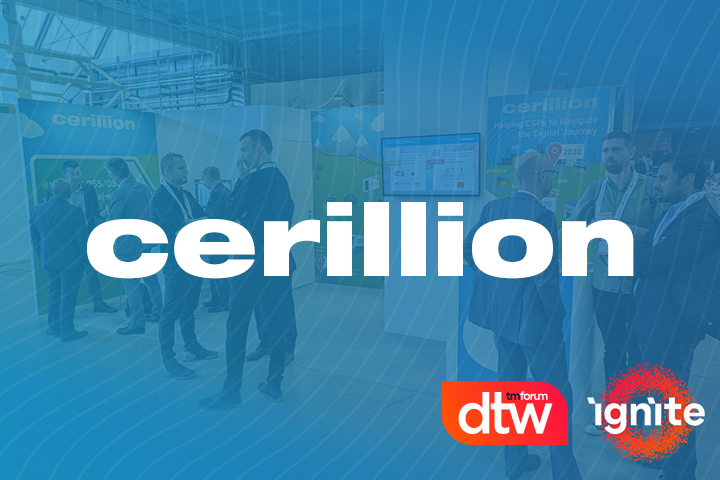DTW23 - Ignite: AI lights a fire under the telecoms industry

Cerillion were back as silver sponsors of DTW23 last month. From catching up with customers, talking to prospects and participating in sessions, Brian Coombs divulges his highlights from this year’s show.
This year’s DTW in Copenhagen opened with a stark warning from Nik Willetts, TM Forum CEO, declaring a “code red” for the telecoms industry based on too much spend, too much competition and too little growth.
Whilst obviously headline-grabbing, the key message, and one I can thoroughly agree with, is that the only way for existing telcos to grow is to radically simplify. There are so many examples I’ve personally seen of companies designing for exceptions, looking to migrate hundreds of plans with a handful of customers on each, or wanting to customise everything to the nth degree – a recipe for making things complex and expensive – and this really has to change.
His other core message was about the growing adoption of the Open Digital Architecture (ODA), with over 1 billion subscribers now “running on ODA” across some of the largest CSPs worldwide, and the introduction of the ODA canvas, which we will explore further in a future blog.
However, as with every recent industry event, there was no question as to what was on everyone’s mind – almost every session and every vendor was talking about GenAI. ChatGPT shook up the world 10 months ago, shortly after last year’s DTW, and the speed of take-up across businesses is phenomenal.
It was reminiscent of previous shows and areas of hype, be it the Metaverse last year, or blockchain a few years before that. However, the major difference – and for me, the reason why this is the real thing as opposed to those fads – is that most people in Copenhagen were talking about what they’ve already done with GenAI; how it is saving them money (£1 billion, in the case of BT), improving customer service (Vodafone), or just the experiments they were doing and what they’d learnt from these. Compare this with the previous examples, where all the talk was about what it might do, and what could happen in the future, and you can see why this has got everyone so excited.
Of course, we were no different, showing off our own natural language package configuration demo in our Enterprise Product Catalogue. It was wonderful to hand the keyboard over to someone who might normally expect to have to go to their IT team and wait for a developer to create their new packages, but with our new GenAI integration, they can just type what they want, then watch as a minute later, a fully configured package to their specification appears on screen. Look out for more of this type of thing shortly.
The elephant in the room was that although everyone was talking about it, the one company that wasn’t there was OpenAI; instead, Nvidia were there to pick up the slack, with representatives on several panels talking about their own (very lucrative!) role in the revolution, and what they saw coming on the horizon.
I was reminded of a few years back when the hyperscalers were on everyone’s mind and lips, and yet none were to be seen. What was interesting was that this year they were all there, and heavy sponsors at that, and all putting forward their own ODA canvases. They have obviously decided the telecoms industry is worth taking seriously, and the industry has decided that it’s better to work with them than to fight them.
The most interesting session I sat in on was Günther Ottendorfer, CTIO of Ooredoo Qatar, talking about how they dealt with having the biggest sporting event in the world turn up at their door, and the requirements for a modern network to handle the influx of traffic that came with hosting the World Cup at the end of last year.
During the tournament, they handled over 800TB of data on their mobile network, with 45TB at the final alone, 45% of which was over 5G. They worked with Ericsson’s machine learning (ML) platform to improve the network after every game, and the results were highly impressive, with performance, reliability and throughput continuing to improve, even as the number of users increased. It was a great example of real improvements that can be made through ML network optimisation.
Of course, the real draw was our very own Richard Doughty, back on a panel this year discussing A blueprint for growth: the techco operating model, along with Gert Rieder, VP at Norlys and others. They discussed the potential for improving growth through a separation of the network operating company (NetCo) and service provider (ServCo), with Gert emphasising the need for CSPs to be bold and brave to move forward in the techco world. If you missed the panel, then it’s well worth watching it on-demand here.
Overall, it was another very successful and interesting event, with some real, palpable use cases for exciting emerging technologies (not just AI!), and I can’t wait to see how these will develop by next year.
To meet with Cerillion at an upcoming industry event, please check out our schedule here.

